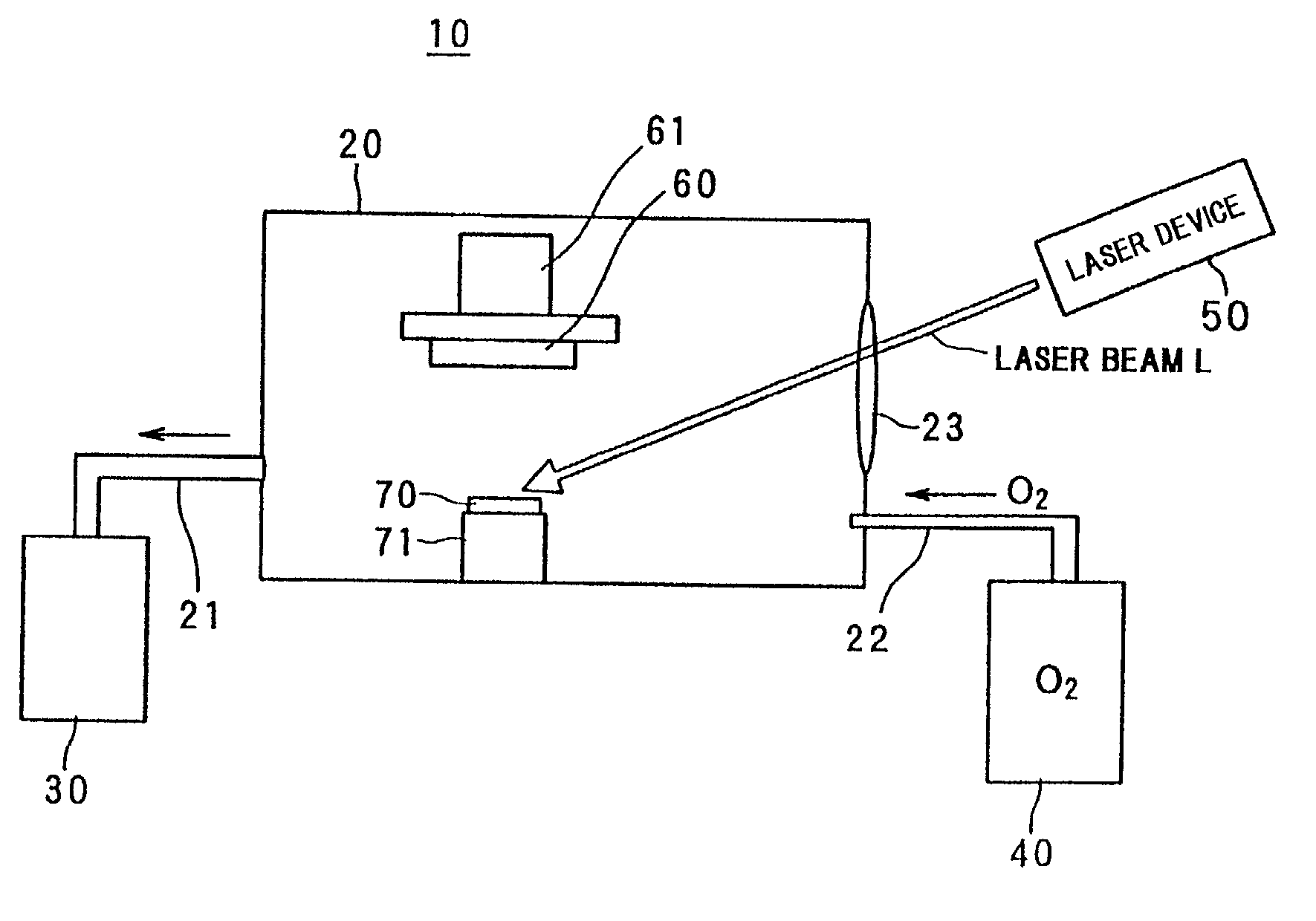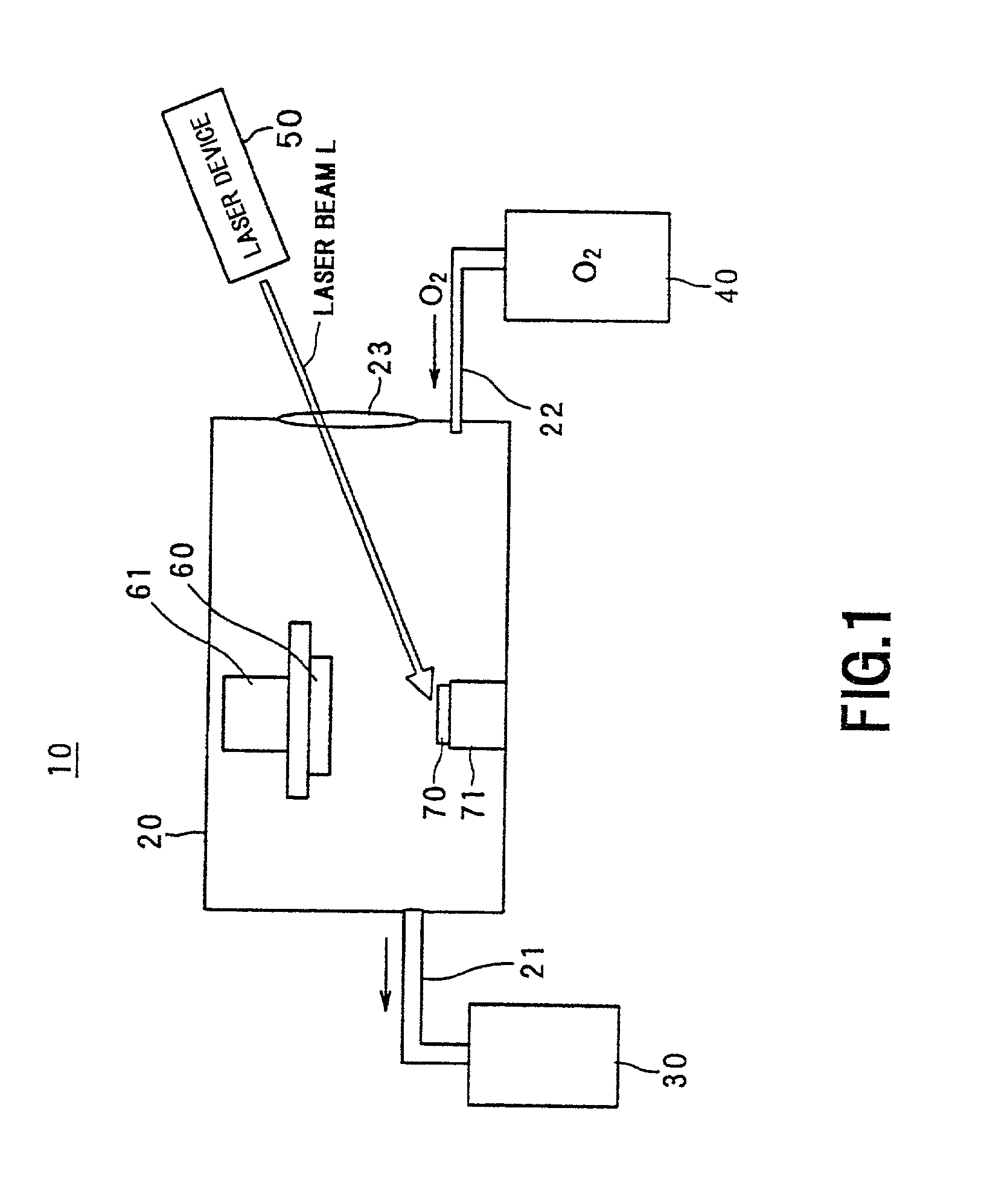Method for forming porous film, insulating film for semiconductor element, and method for forming such insulating film
a technology of insulating film and semiconductor element, which is applied in the direction of vacuum evaporation coating, coating, sputtering coating, etc., can solve the problems of signal delay, failure to reach the relative dielectric constant of 1.5 required by the 0.07 .mu.m design rule of the next generation, and the inability to form a stable porous film
- Summary
- Abstract
- Description
- Claims
- Application Information
AI Technical Summary
Benefits of technology
Problems solved by technology
Method used
Image
Examples
Embodiment Construction
[0088] The preferred embodiment of the present invention will be described below with reference to the drawings attached.
[0089] First, a method for forming a porous film will be described.
[0090] In the present embodiment, a porous film composed of Si and oxygen and containing pores is formed on a substrate by a laser ablation method using silicon (referred to as Si hereinbelow) in a gas (atmosphere) containing oxygen.
[0091] In accordance with the laser ablation process, a thin film is formed by irradiating a target with a laser (laser beam), thereby heating the surface of the irradiated portion of the target to a high temperature and melting it, causing evaporation of this surface, and inducing the formation of clusters, thereby causing clusters to adhere to the substrate surface.
[0092] FIG. 1 is a structural view of an apparatus 10 for implementing the method for forming a porous insulating film in accordance with the present invention.
[0093] As shown in FIG. 1, apparatus 10 is gen...
PUM
| Property | Measurement | Unit |
|---|---|---|
| Pressure | aaaaa | aaaaa |
| Thickness | aaaaa | aaaaa |
| Pressure | aaaaa | aaaaa |
Abstract
Description
Claims
Application Information
 Login to View More
Login to View More - R&D
- Intellectual Property
- Life Sciences
- Materials
- Tech Scout
- Unparalleled Data Quality
- Higher Quality Content
- 60% Fewer Hallucinations
Browse by: Latest US Patents, China's latest patents, Technical Efficacy Thesaurus, Application Domain, Technology Topic, Popular Technical Reports.
© 2025 PatSnap. All rights reserved.Legal|Privacy policy|Modern Slavery Act Transparency Statement|Sitemap|About US| Contact US: help@patsnap.com



